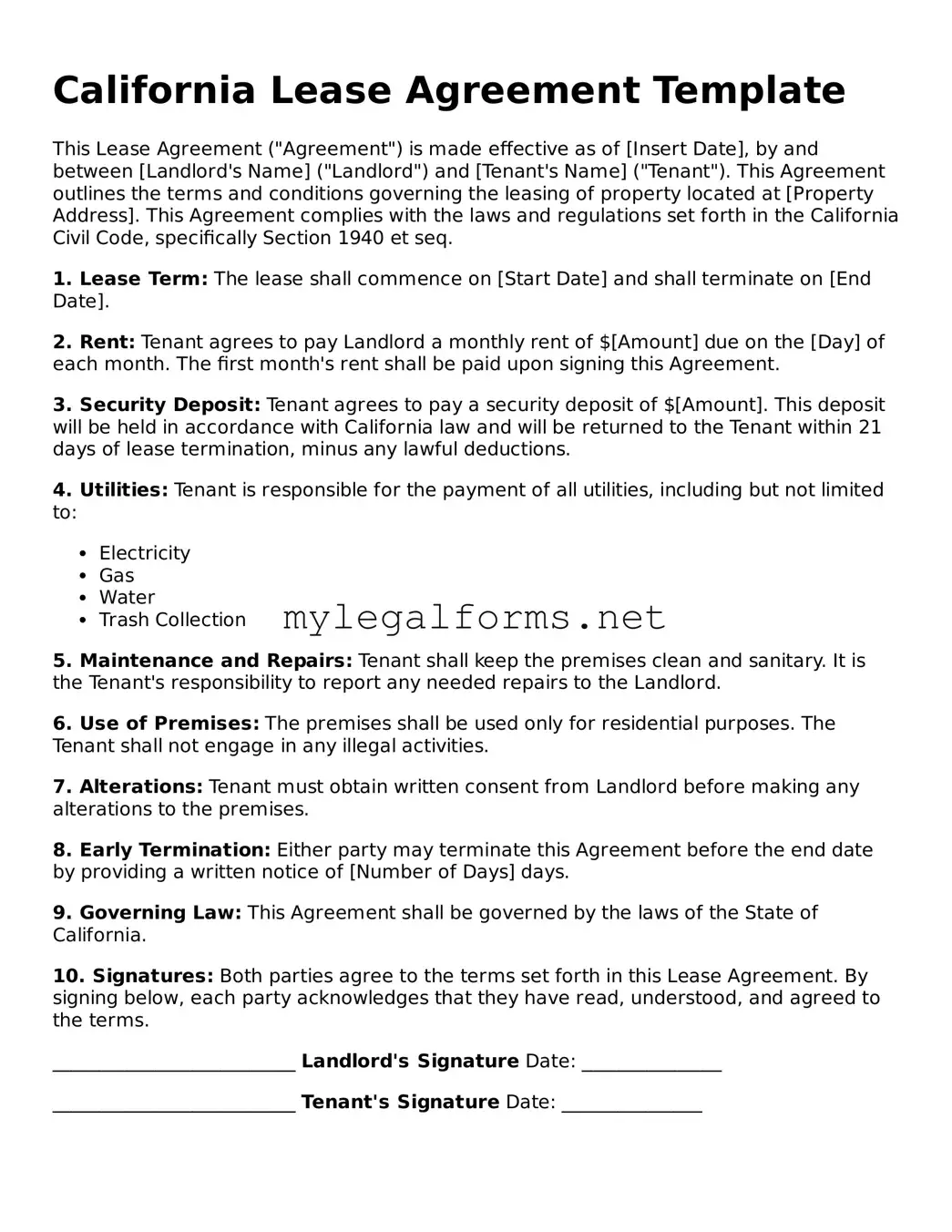California Lease Agreement Template
This Lease Agreement ("Agreement") is made effective as of [Insert Date], by and between [Landlord's Name] ("Landlord") and [Tenant's Name] ("Tenant"). This Agreement outlines the terms and conditions governing the leasing of property located at [Property Address]. This Agreement complies with the laws and regulations set forth in the California Civil Code, specifically Section 1940 et seq.
1. Lease Term: The lease shall commence on [Start Date] and shall terminate on [End Date].
2. Rent: Tenant agrees to pay Landlord a monthly rent of $[Amount] due on the [Day] of each month. The first month's rent shall be paid upon signing this Agreement.
3. Security Deposit: Tenant agrees to pay a security deposit of $[Amount]. This deposit will be held in accordance with California law and will be returned to the Tenant within 21 days of lease termination, minus any lawful deductions.
4. Utilities: Tenant is responsible for the payment of all utilities, including but not limited to:
- Electricity
- Gas
- Water
- Trash Collection
5. Maintenance and Repairs: Tenant shall keep the premises clean and sanitary. It is the Tenant's responsibility to report any needed repairs to the Landlord.
6. Use of Premises: The premises shall be used only for residential purposes. The Tenant shall not engage in any illegal activities.
7. Alterations: Tenant must obtain written consent from Landlord before making any alterations to the premises.
8. Early Termination: Either party may terminate this Agreement before the end date by providing a written notice of [Number of Days] days.
9. Governing Law: This Agreement shall be governed by the laws of the State of California.
10. Signatures: Both parties agree to the terms set forth in this Lease Agreement. By signing below, each party acknowledges that they have read, understood, and agreed to the terms.
__________________________ Landlord's Signature Date: _______________
__________________________ Tenant's Signature Date: _______________
